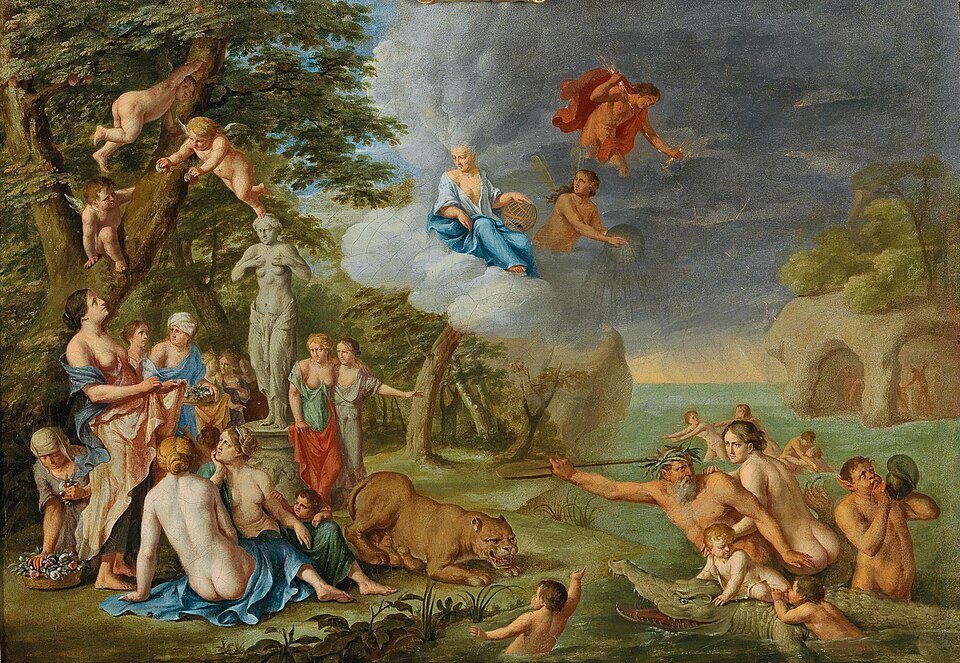In the vast, tangled arms of the world’s equatorial rainforests, the sounds of birds and howler monkeys may dominate the air—but beneath the soil, under the vines, and beneath centuries of encroaching green, there lie whispers. Whispers of stone, of shattered walls and paved avenues, of city lights long gone dark. These are the buried heartbeats of civilizations forgotten: the ancient urban wonders lost in the jungles.
While the desert may preserve ruins in sunlight and sand, the jungle devours. It absorbs whole cities into its chaotic tangle, hiding them in foliage and fog. Unlike the pyramids of Egypt or the temples of Greece, the metropolises that once pulsed in tropical rainforests were hidden not by time alone but by biology, humidity, and relentless growth. And yet, in the last century—and especially in the last few decades—technology and tenacity have begun peeling back the layers.
This is the story of cities no one knew were there. Cities of stone and ceremony. Cities with roads, laws, and kings. Cities that rivaled the size and complexity of anything in Europe or Asia—then were swallowed by green oblivion.
Cities Beneath the Canopy
It is often said that the jungle hides its secrets well. Nowhere is this truer than in the Amazon, Central America, and Southeast Asia, where entire civilizations vanished from sight. These weren’t villages or trading outposts. They were sophisticated cities with complex infrastructures, vibrant economies, and enormous cultural importance.
For centuries, explorers dismissed the notion that the jungle could support large populations. The soil, they argued, was too poor. The climate too hostile. At best, they believed, the jungle housed scattered tribal communities. The idea of massive urban centers deep in the forest was, to them, absurd. That belief, as we now know, was catastrophically wrong.
The dense jungle canopy not only concealed these cities from early explorers—it actively dismantled them. Stone was cracked by root systems. Buildings collapsed under the weight of moss and vines. Pathways turned into muddy animal tracks. By the time modern archaeologists arrived, there were often no visible signs of cities at all—only oddly shaped hills or clusters of trees with unusual topography. Yet beneath the soil, the cities waited.
The Maya Megacities of Central America
One of the most dramatic revelations of ancient urbanism hidden in the jungle came from the lowland rainforests of modern-day Guatemala, Honduras, Belize, and southern Mexico. Here, the ancient Maya civilization thrived for centuries, building vast cities of stone pyramids, causeways, palaces, and plazas. While some Maya sites—like Tikal and Palenque—had been known since the 19th century, their scale was grossly underestimated.
In 2018, a revolution in archaeological surveying called LiDAR (Light Detection and Ranging) tore away the illusion. By firing laser pulses from aircraft through the forest canopy and measuring the bounce-back, archaeologists were able to digitally strip away the jungle’s cloak. What they found stunned the world.
The LiDAR scans revealed over 60,000 previously unknown structures surrounding Tikal and other Maya cities. Entire urban networks—grids of homes, fortifications, canals, and even superhighways—emerged from the data. Tikal, long thought to be an isolated temple center, was suddenly revealed as the beating heart of a sprawling megacity, home to potentially hundreds of thousands of people.
The implications were enormous. The Maya, it turns out, had engineered their environment masterfully. They built terraced hillsides, artificial reservoirs, and advanced irrigation systems. The jungle hadn’t hindered their civilization—it had supported it, albeit through complex adaptation. These weren’t isolated religious outposts. They were entire urban civilizations hidden in green.
Angkor: The Hydraulic Empire of the East
Thousands of miles away, another urban marvel once thrived in the steamy jungles of Southeast Asia. Angkor, the ancient capital of the Khmer Empire in what is now Cambodia, was for centuries the largest city on Earth.
At its peak around the 12th century, Angkor stretched across more than 1,000 square kilometers—an area rivaling that of modern Los Angeles. Its centerpiece was Angkor Wat, the world’s largest religious monument, but the city itself extended far beyond what tourists see today. Massive temples, libraries, and houses dotted the jungle landscape, connected by roads and canals.
Angkor was a city of water. Its people constructed a vast hydraulic system—giant barays (reservoirs), moats, canals, and spillways—that managed the unpredictable monsoon rains. This system not only provided drinking water and irrigation, but it also demonstrated incredible engineering foresight.
Then, like a ghost, Angkor faded. By the 15th century, the city was largely abandoned. Its temples remained, slowly reclaimed by banyan trees and strangler figs. But the majority of Angkor vanished beneath jungle soil—until archaeologists began the painstaking task of rediscovery. Again, LiDAR played a crucial role.
In 2012 and again in 2015, aerial scans revealed sprawling suburbs and industrial zones around Angkor. The city was even bigger than scholars had imagined, and its complex water-management system was central to both its rise and fall. When the climate shifted and extreme droughts were followed by floods, Angkor’s carefully tuned balance collapsed.
The Mythical Cities of the Amazon
For much of modern history, the Amazon rainforest was deemed uninhabitable for urban life. The prevailing narrative—popularized by explorers like Percy Fawcett—was one of isolation and failure. Fawcett’s ill-fated search for a “Lost City of Z” ended in his mysterious disappearance, reinforcing the idea that no such cities had ever existed.
Yet in recent decades, a quiet revolution in Amazonian archaeology has been rewriting that story. Excavations and remote sensing have revealed signs of massive, interconnected settlements scattered across the western Amazon Basin. These weren’t merely camps or hamlets—they were urban landscapes, complete with plazas, roads, and ceremonial mounds.
In the Brazilian state of Acre, archaeologists uncovered intricate geoglyphs—massive earthworks carved into the ground, often spanning hundreds of feet. These were not random. They were constructed by coordinated societies with a keen understanding of engineering and symbolism. And they weren’t isolated: similar formations have now been found throughout parts of Peru, Bolivia, and Colombia.
More recently, in 2022, LiDAR surveys revealed a vast network of pre-Columbian settlements in the Bolivian Amazon. These included tiered platforms, wide boulevards, and pyramidal structures. Some of these cities covered areas up to 500 hectares—larger than many European medieval towns.
The implications are staggering. These were not backward forest tribes eking out an existence. These were city-builders who engineered their environment, cultivated vast tracts of land, and organized labor on a massive scale. Their collapse—likely due to European contact, disease, and colonial violence—left little trace on the surface. But the jungle, as always, kept the memory beneath its skin.
Jungle as Both Preserver and Destroyer
What makes jungle cities so fascinating is their paradoxical relationship with nature. The rainforest is both their nemesis and their savior.
On one hand, the jungle destroys. It wraps buildings in roots, collapses roofs, and covers roads in vegetation. The sheer humidity breaks down stone, while insects and mold consume wood. Over centuries, whole metropolises can vanish without a trace.
On the other hand, the jungle also preserves. Unlike cities that were looted and reused for centuries (as in the Mediterranean), jungle cities were often left alone. Their isolation protected them from human interference. In this sense, the jungle acts like a living time capsule—swallowing, but not forgetting.
This dual nature of the jungle is what makes rediscovery so powerful. The moment a lost city is revealed, it emerges almost mythically—like something reborn. Archaeologists and historians must then sift through centuries of entanglement, piecing together a story from stone and soil.
Technology: The Jungle’s Greatest Rival
For centuries, the main obstacle to jungle archaeology was accessibility. Trees grew too thick, the undergrowth too wild. Excavation required machetes and months of labor. But today, technology is changing the game.
LiDAR has become the hero of modern jungle archaeology. Mounted on drones, helicopters, or planes, these laser sensors can map the forest floor in exquisite detail—even beneath dense canopy. Suddenly, archaeologists can see the outlines of temples, roads, and neighborhoods without setting foot on the ground.
But LiDAR is only part of the equation. Satellite imagery, ground-penetrating radar, and 3D mapping tools are turning archaeology into a high-tech treasure hunt. Combined with AI analysis and ethnographic data, these tools are helping researchers reimagine ancient jungle life in ways that would have seemed like science fiction a generation ago.
Rewriting the Narrative of Civilization
The rediscovery of ancient urban wonders in jungles forces us to rethink what constitutes civilization. For centuries, the Western narrative held that “true” civilization arose in dry, open environments: the Nile Valley, Mesopotamia, the Indus plain. The jungle, by contrast, was seen as too chaotic, too wild.
But this view is crumbling. We now know that rainforests housed vast, complex societies—societies that understood ecology, built infrastructure, and sustained urban populations for centuries. Their cities may not have looked like Rome or Babylon, but they were no less impressive.
This realization shifts the axis of history. No longer is civilization a linear march from primitive to advanced. Instead, it is a rich, tangled web of innovation, adaptation, and resilience. The jungle, once seen as civilization’s enemy, is now revealed as one of its most dramatic stages.
Echoes That Still Call
Today, many of these lost cities are only partially excavated. The majority of structures remain buried beneath the forest floor, waiting for future generations to reveal their contours. But the people who built them are not entirely gone. Their descendants—Maya, Khmer, Amazonian tribes—still live in and around these regions, carrying echoes of the past in their languages, customs, and rituals.
These echoes remind us that the past is never truly lost. It waits in the soil, in the leaves, in the stones. It waits for the curious, the careful, and the patient to listen.
In the end, perhaps the greatest wonder of these jungle cities is not their grandeur or mystery—but the way they challenge our assumptions. They remind us that civilization wears many faces, speaks many tongues, and sometimes lives in the green places where we least expect it.






